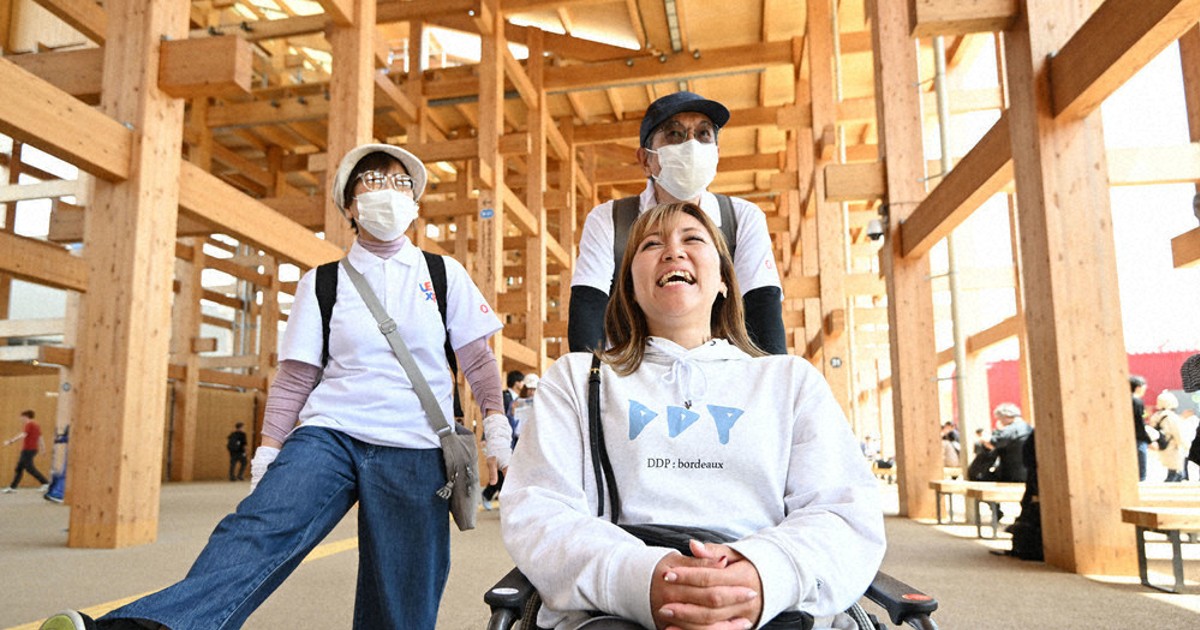EXPO: Making Everyone Feel Welcome – A Guide to Inclusive Event Planning
Introduction:
Planning a successful expo requires meticulous attention to detail, from securing the venue to managing logistics. However, true success lies in creating an inclusive and welcoming environment where everyone feels valued and comfortable. This article delves into the crucial aspects of making your EXPO truly inclusive, covering accessibility, representation, and fostering a sense of belonging for all attendees. We'll explore practical strategies and best practices to ensure your event is a resounding success for a diverse audience.
Accessibility: The Foundation of an Inclusive EXPO
Accessibility isn't just a legal requirement; it's a fundamental aspect of creating a welcoming atmosphere. Failing to cater to diverse needs can alienate potential attendees and damage your event's reputation.
Key Considerations for Accessibility:
- Physical Accessibility: Ensure your venue is wheelchair accessible, with ramps, elevators, and appropriately sized restrooms. Clearly mark accessible entrances and routes. Consider providing wheelchair rentals or assistance.
- Sensory Accessibility: Reduce overwhelming noise levels, provide quiet zones for those sensitive to stimulation, and offer visual aids alongside audio announcements. Consider the needs of visually impaired attendees with braille signage and audio descriptions.
- Cognitive Accessibility: Use clear and concise language in all communication materials. Provide easy-to-navigate websites and brochures with simple layouts. Offer translation services if necessary.
- Digital Accessibility: Ensure your website and any online registration processes meet WCAG (Web Content Accessibility Guidelines) standards.
Representation Matters: Showcasing Diversity at Your EXPO
A truly inclusive EXPO actively showcases diversity in its speakers, exhibitors, and attendees. This creates a richer experience for everyone and avoids the homogeneity that can alienate many.
Strategies for Diverse Representation:
- Speaker Selection: Actively seek out speakers from diverse backgrounds, including different ethnicities, genders, abilities, and sexual orientations.
- Exhibitor Selection: Prioritize exhibitors who represent a wide range of perspectives and cater to diverse markets.
- Marketing and Promotion: Use imagery and language that reflect the diversity of your target audience. Avoid stereotypes and promote inclusivity in all your promotional materials.
Fostering a Sense of Belonging: Creating a Welcoming Atmosphere
Beyond accessibility and representation, creating a welcoming environment involves fostering a culture of respect and understanding.
Creating a Welcoming Atmosphere:
- Staff Training: Train your staff to be sensitive to the needs of diverse attendees and to address any concerns with professionalism and empathy.
- Code of Conduct: Establish a clear code of conduct that emphasizes respect, inclusivity, and zero tolerance for harassment or discrimination. Make this code prominently visible.
- Networking Opportunities: Designate spaces and activities that encourage networking and interaction among attendees from different backgrounds.
- Feedback Mechanisms: Collect feedback from attendees to identify areas for improvement and ensure your event remains inclusive in the future.
Measuring Success: Evaluating Inclusivity at Your EXPO
Assessing the effectiveness of your inclusivity initiatives is crucial for continuous improvement.
Key Metrics:
- Attendee Demographics: Track the demographics of your attendees to understand the level of diversity achieved.
- Feedback Surveys: Use surveys to gather feedback on attendees' experiences and identify areas for improvement.
- Social Media Monitoring: Monitor social media conversations to gauge public perception and identify any negative experiences.
Conclusion: Building an Inclusive EXPO for the Future
Making your EXPO truly inclusive is not just a matter of ticking boxes; it's about creating a welcoming and enriching experience for everyone. By prioritizing accessibility, representation, and a culture of belonging, you can create an event that leaves a positive impact and encourages greater participation from a diverse range of individuals. Remember, a welcoming and inclusive event is a successful event. Start planning your next inclusive EXPO today!
